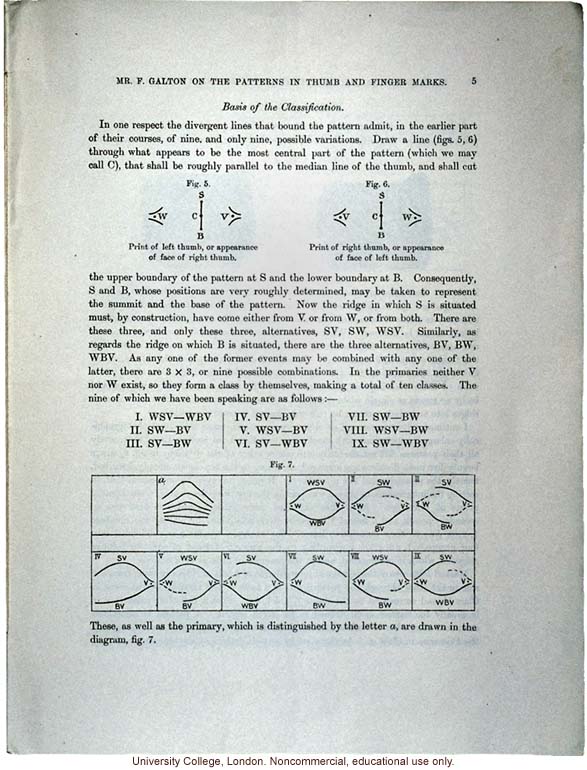Mr. F. Galton on the Patterns in Thumb and Finger Marks. 5
Basis of the Classification.
In one respect the divergent lines that bound the pattern admit, in the earlier part of their courses, of nine, and only nine, possible variations. Draw a line (figs. 5, 6) through what appears to be the most central part of the pattern (which we may call C), that shall be roughly parallel to the median line of the thumb, and shall cut
[figures 5 and 6 here]
the upper boundary of the pattern at S and the lower boundary at B. Consequently, S and B, whose positions are very roughly determined, may be taken to represent the summit and the base of the pattern. Now the ridge in which S is situated must, by construction, have come from either V. or from W, or from both. There are these three, and only these three, alternatives, SV, SW, and WSV. Similarly, as regards the ridge on which B is situated, there are the three alternatives, BV, BW, WBV. As any one of the former events may be combined with any one of the latter, there are 3 x 3, or nine possible combinations. In the primaries neither V nor W exist, so they form a class by themselves, making a total of ten classes. The nine of which we have been speaking are as follows: --
I. WSV - WBV
II. SW - BV
III. SV - BW
IV. SV - BV
V. WSV - BV
VI. SV - WBV
VII. SW - BW
VIII. WSV - BW
IX. SW - WBV
[figure 7 here]
These as well as the primary, which is distinguished by the letter [italics]a[end italics], are drawn in the diagram, fig. 7.
[end]


